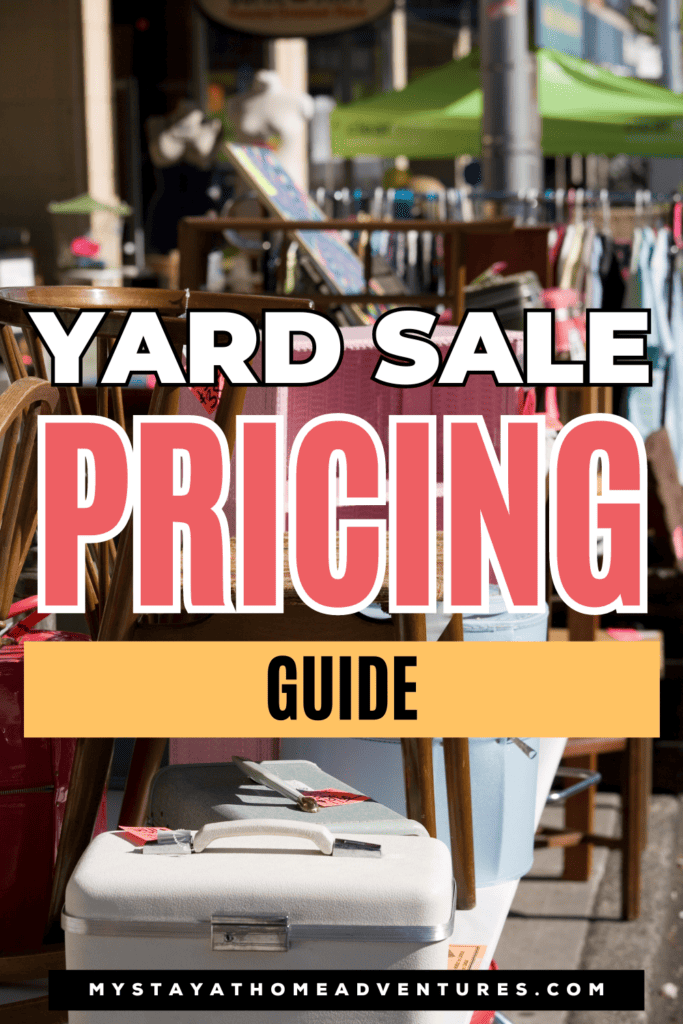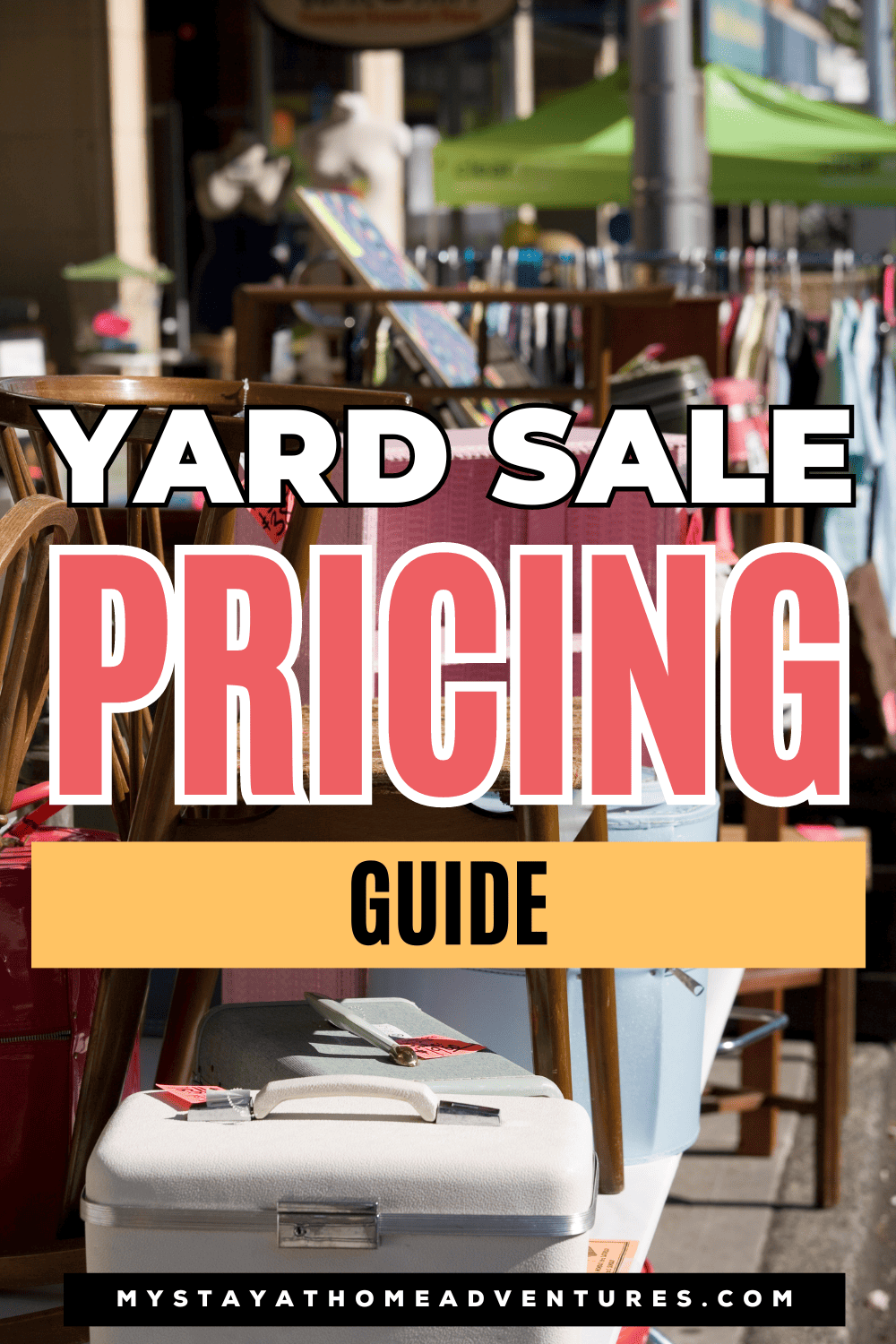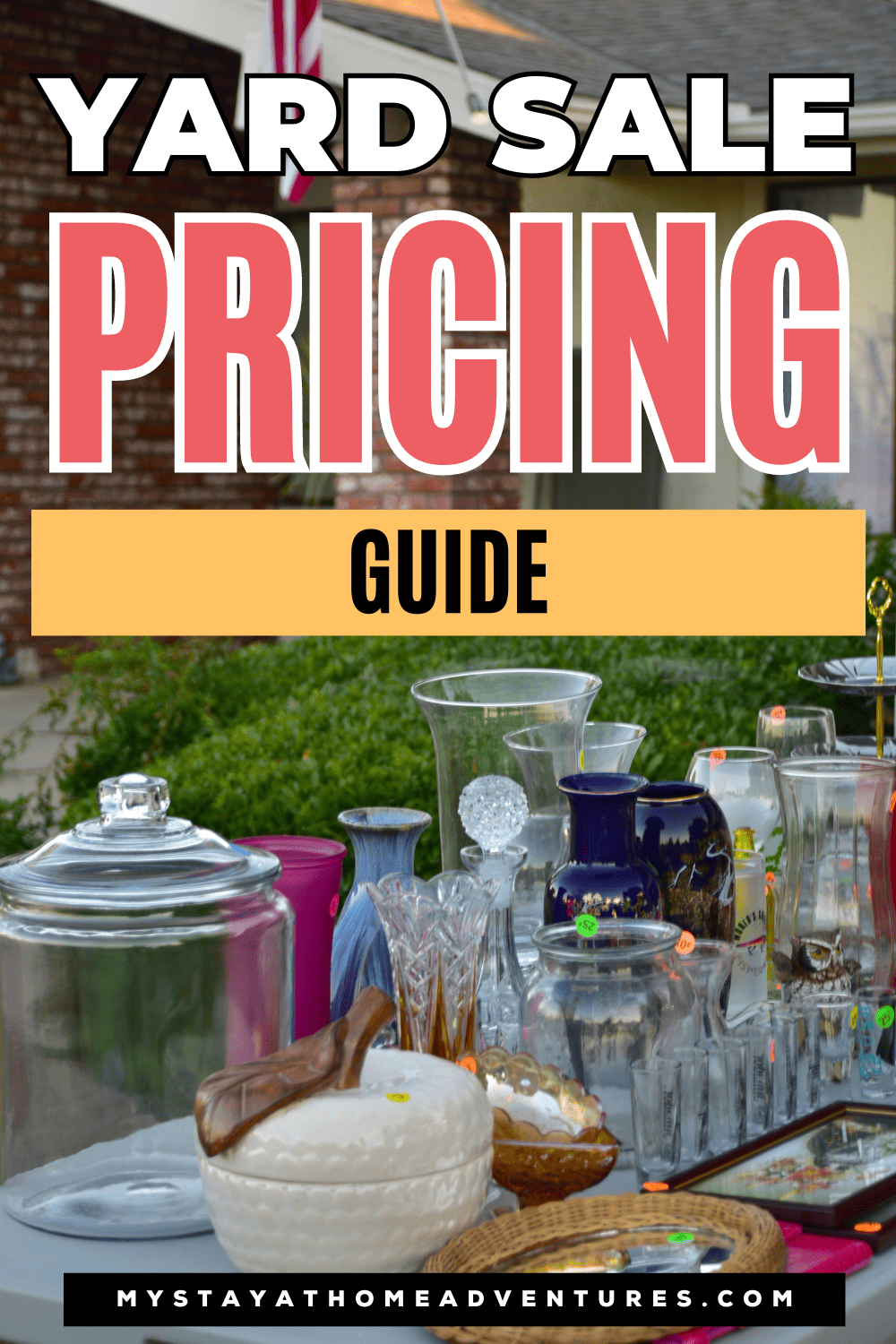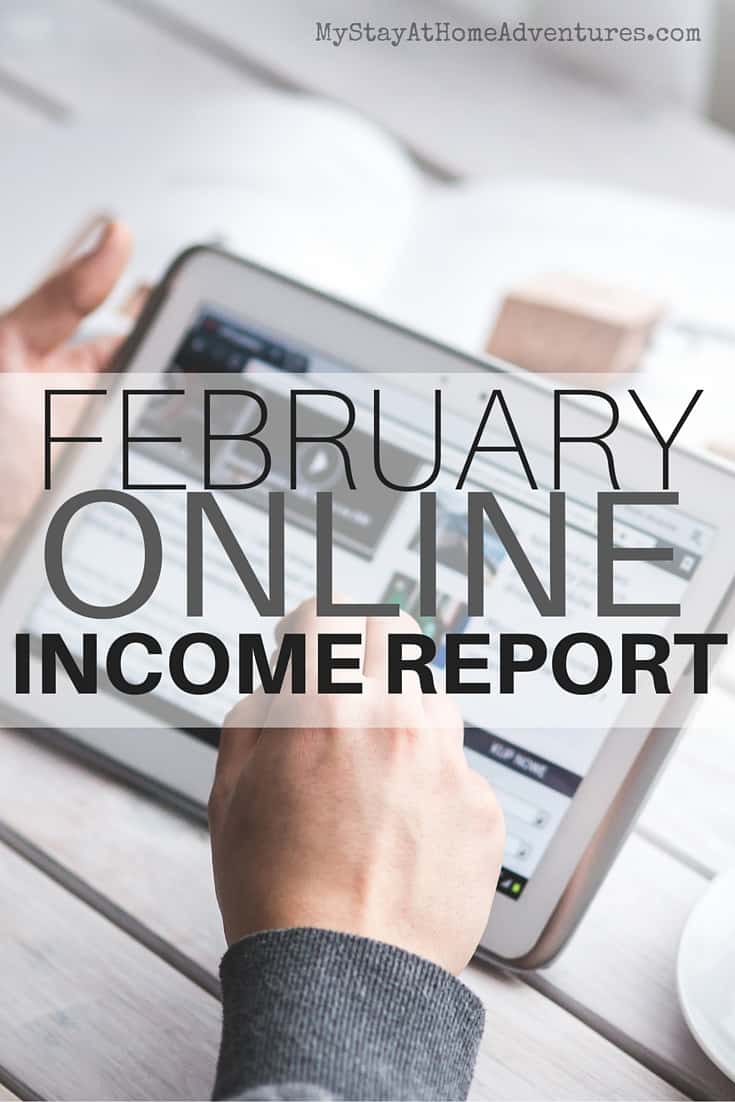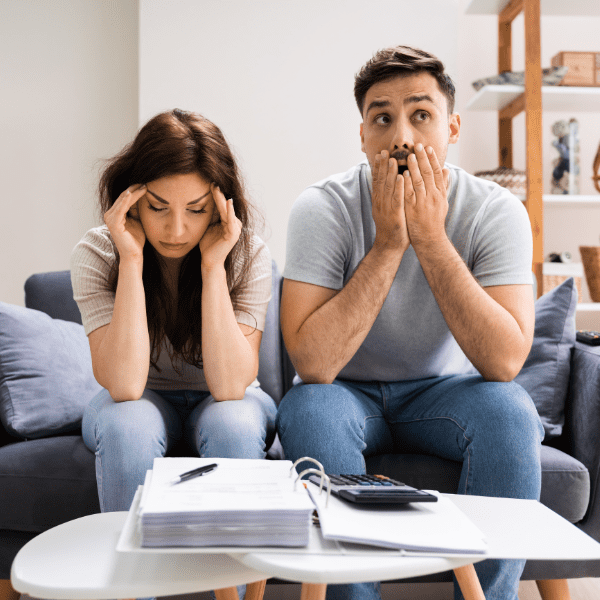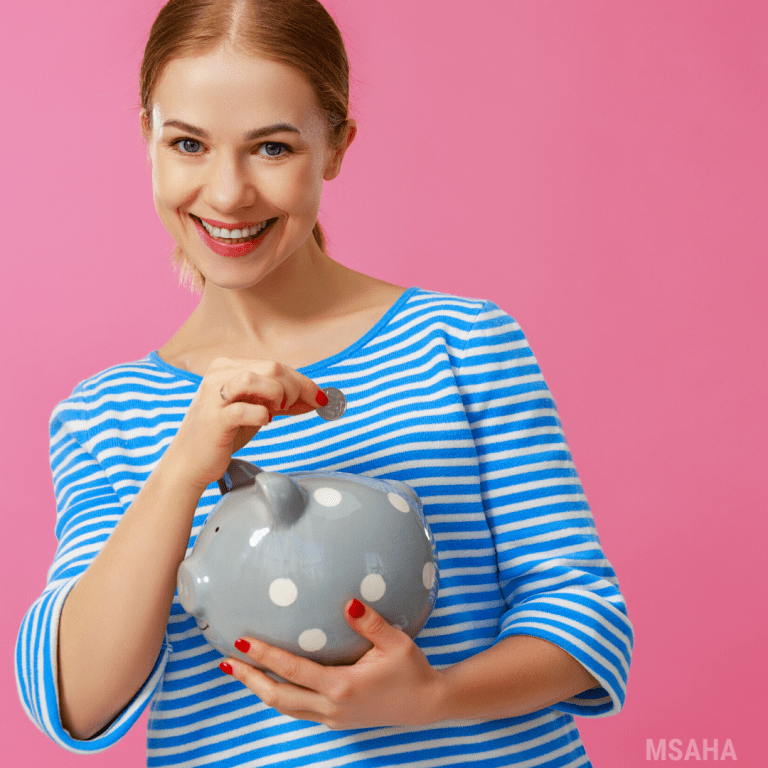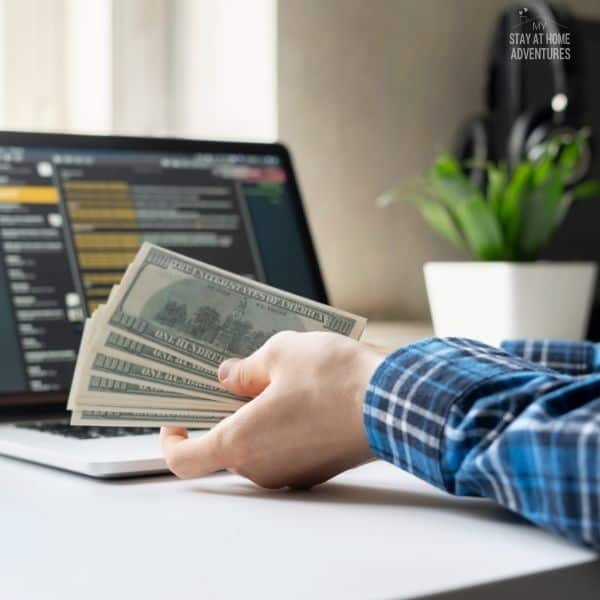Yard Sale Pricing Guide for 2024
This post may contain affiliate links which might earn us money. Please read my Disclosure and Privacy policies hereAre you looking to spruce up your yard sale? Have you ever been in need of guidance when it comes to pricing items for a successful yard sale?
Well, look no further! We will provide you with helpful information and tips for pricing items for a successful yard sale. From how to determine the right price for each item to techniques for setting prices that will encourage buyers, we got you covered.
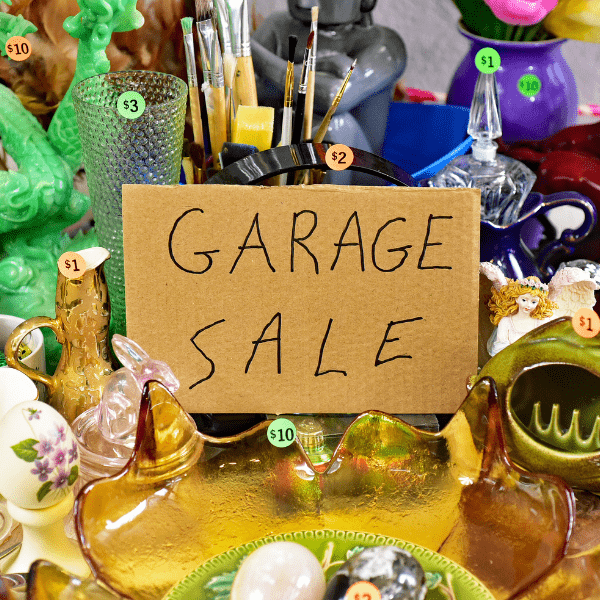
Every year, an estimated 6.5 to 9 million Americans have garage sales, selling secondhand things from or near their homes. Typically, around one in every four Americans holds a yard sale to recycle household goods, earn a few dollars, and make friends with neighbors; buyers visit to buy low-cost items, haggle for fun, and find the occasional yard sale gem.
So, get ready to make the most of your next yard sale!
You might enjoy these posts:
- How To Bring Traffic To A Yard Sale
- 17 Things That Sell Well at Yard Sales (and will make you money!)
How do you calculate garage sale price?
Generally speaking, garage sale items should cost 5-10% of an item's retail price, with some exceptions depending on the item's condition and popularity. You should not add more than 10% of the selling price.
This means that if you paid $30 for a thing, you should not charge more than $3 for it at your garage sale. If these are high-quality products from luxury brands, you may be able to raise the pricing by 20%, but this general approach can help you maintain prices low enough to generate a lot of sales.
This is a good compromise between pricing too low, scaring buyers away, and pricing too high and not making any sales!
When hosting a yard sale, it's important to price items correctly in order to maximize profits. Here is a handy guide to help you determine the right prices for your items:
| Item | Price range |
| Accessories | $0.25 – $1.00 |
| Sports Equipment | $10 – $50 |
| Shoes | $1 – $12 |
| Used Clothing (per piece) | $1 – $10 |
| Furniture | $10 – $50 |
| Antique Furniture | $50 – $200 |
| Kitchen Appliances | $15 – $50 |
| Decor | $0.25 – $5 |
| Lamps | $5 – $10 |
| Throw Pillows | $1 – $3 |
| Wall Décor | $1 – $20 |
| Used Bicycle | $50 – $100 |
| Mirrors | $20 – $40 |
| Throw Rugs | $2- $5 |
| Area Rugs | $20 -$25 |
| Baskets | $0.50 – $2.00 |
| Curtains | $2 – $5 a pair |
| Candles | $0.50 to $2 |
| Hand Tools | $5 – $20 |
| Garden Tools | $5 – $25 |
| Hardcover Books | $1 |
| Paperbacks | $0.50 (2 for $1) |
| Old Books (each) | $1 – $5 |
| CDs | $0.50 (2 for $1) |
| DVDs and Blu-Ray Discs | $1 for older films |
| Vinyl Records (each) | $2 – $10 |
| Video Games (each) | $5 – $20 |
| PS1 Games | $1 |
| PS1 Controllers | $2 |
| Memory Cards | $2 |
| Playstation 2 Console | $25 |
| PS2 Game Consoles | $3.00 |
| PS2 Controllers | $4 |
| PS2 Memory Card | $4 |
Here are some pointers to learn the best strategies to optimize your yard sales while remaining stress-free. Please note that these prices are just guidelines. Prices can vary based on the item's condition, brand, demand, and your eagerness to sell them. Also, consider the rarity and popularity of the items when setting your prices.
Compile a list of similar items and their prices
- Do some online research to find out what similar items are selling for on sites like eBay or Etsy. This will give you an idea of the current market value.
- Compare the condition of the items you are selling with those for sale online and factor in any differences in price accordingly; for example, if there is wear and tear on an item, you might want to lower your asking price accordingly.
- If you're selling something outdated (like electronics), try looking up reviews to determine what the older model was worth when it was released and adjust your asking price accordingly.
- Keep track of local yard sales and flea markets that occur regularly to compare prices with what people are selling at these venues – this will give you another reference point for pricing your own items fairly.
Assess the condition of each item and adjust the price accordingly
- Examine each item closely for any signs of wear and tear, including stains, fading, tears, or discoloration.
- For electronics, switch them on to check for functionality. You may need to reduce the price accordingly if sound or picture quality issues exist.
- Consider how old the items are; if they’re from a previous decade, you might want to lower the price slightly to make them more attractive to potential buyers.
- Be honest about the condition of your items – don't try and overplay any small flaws as it could lead to customer dissatisfaction later on down the line!
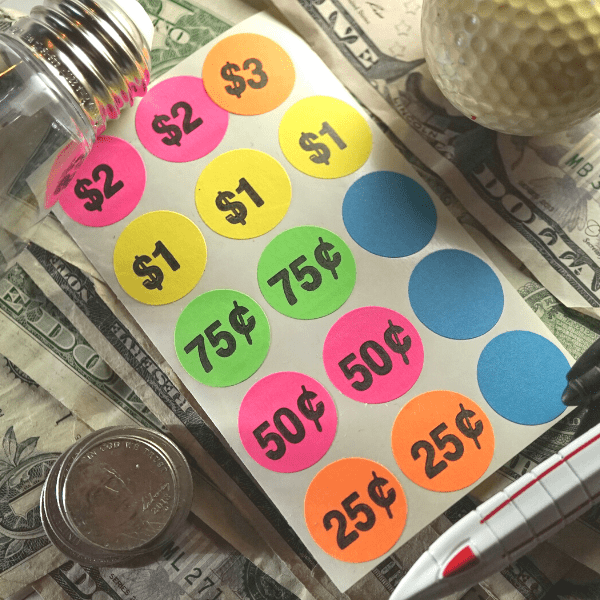
Ask yourself if the price is fair.
When pricing items for your yard sale, it's important to ask yourself if your price is fair. This will help ensure that you're not overcharging customers and that you're also getting a reasonable amount of money for each item.
The price is too high, and people are less likely to buy; the price is too low, and you risk leaving money on the table. Assessing the condition of each item and comparing prices with those found online or at local sales can help give you an idea of what a fair price might be.
Offer discounts on multiple small items or high-value items.
Offering discounts on multiple small or high-value items when pricing a yard sale is a great way to attract more customers and increase sales. This can be done by grouping together related items, offering discounts for buying more than one item, or creating special bundles with items that have greater value when bought in bulk.
Discounts can also help motivate people to take action and make a purchase, so they won't be as likely to wait until the last minute to buy what they need.
How much should shoes be at a yard sale?
When pricing shoes for a yard sale, it's important to consider the condition and brand of the item. Shoes that are in excellent condition and from sought-after brands can be priced higher than shoes that have seen more wear and tear or are from less popular brands. Additionally, if the shoe is trendy or new, it can also be priced higher.
In general, you'll want to price shoes based on what you believe people will pay, given the condition and type of shoe. Generally speaking, you should start at around 50% of the original retail price and then adjust lower or higher depending on the quality and other factors affecting its value.
For example, if you have a pair of designer sneakers that were originally $100, then you could start by pricing them at $50. However, if they're well-worn or out of season, you may need to go as low as $25 or even lower in order to find a buyer.
You might enjoy this post: How to Write a Garage Sale Ad (With Examples)
